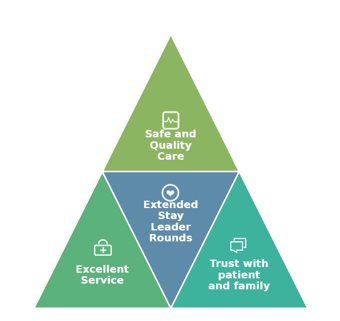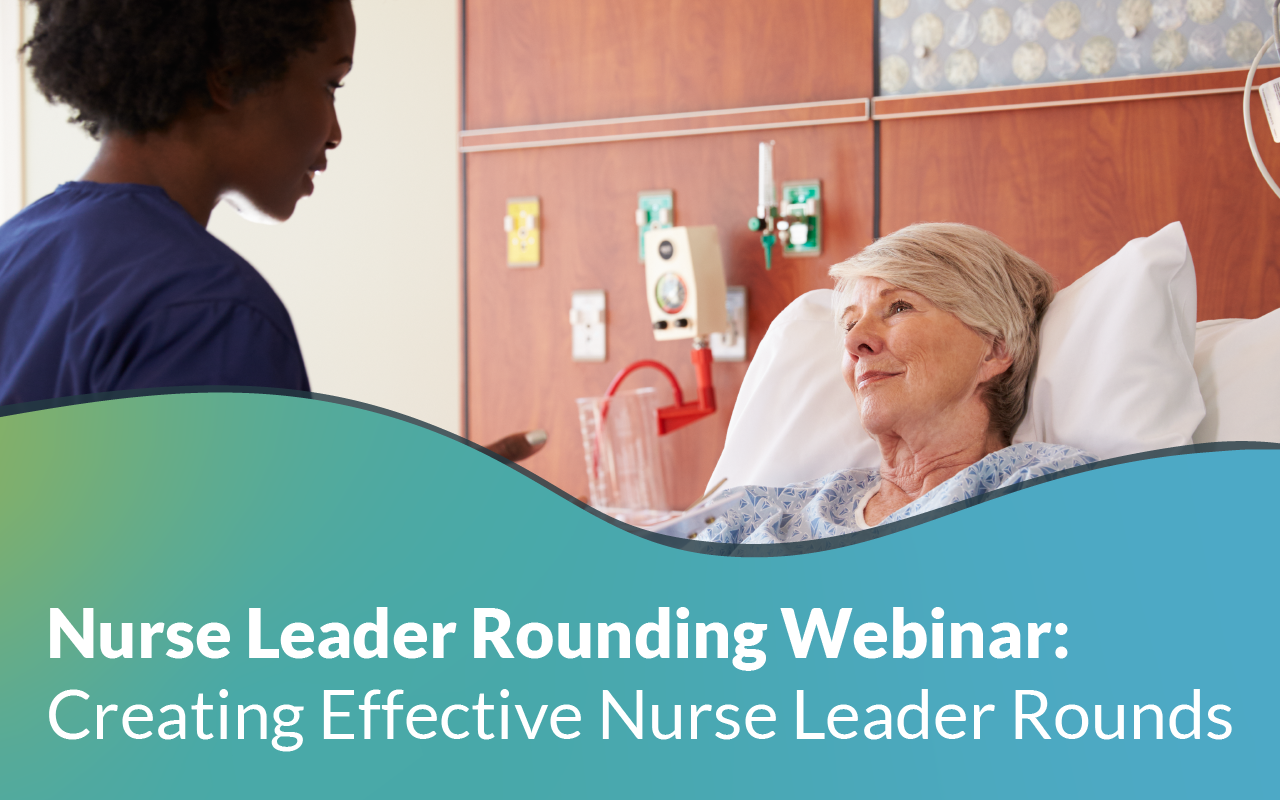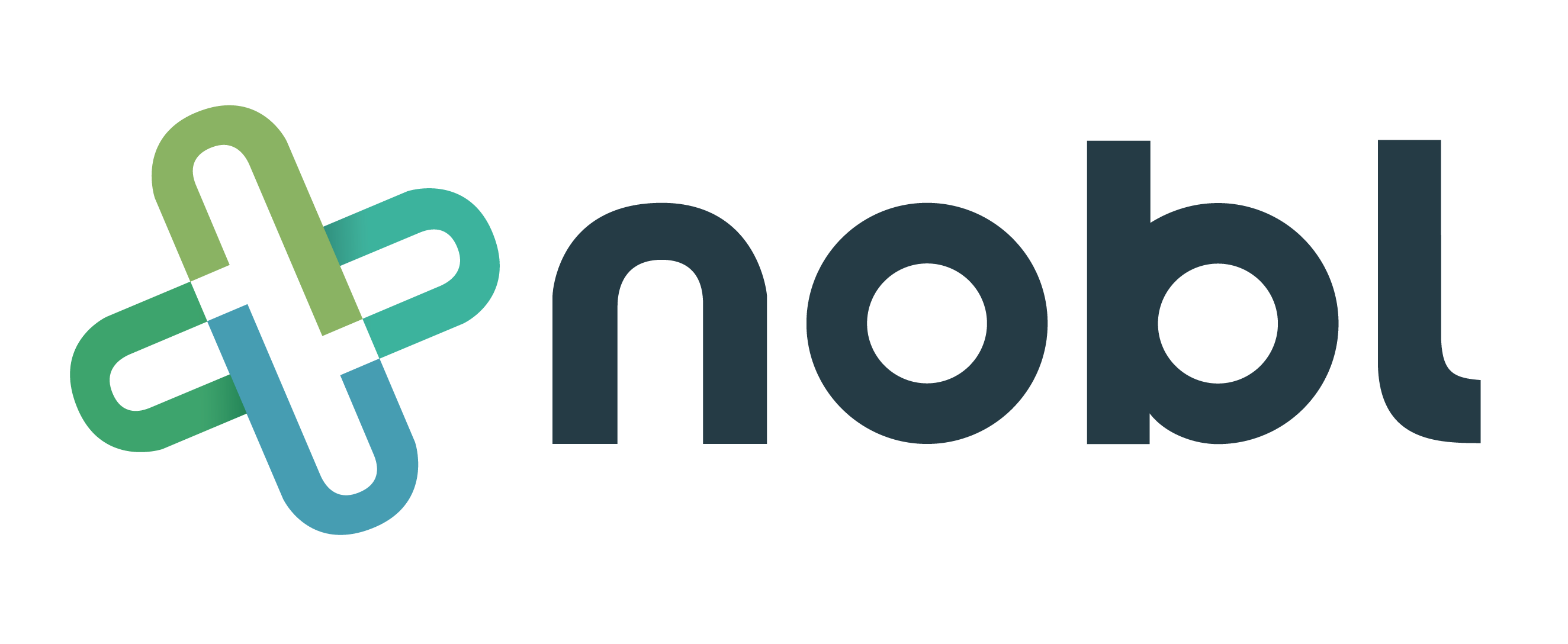
5 min read
4 Steps that Bring Meaning to Leader Rounds on Extended Stay Patients
Nobl Health Oct 5, 2020 5:10:00 AM
The term “extended stay” refers to patients who are hospitalized for a longer than expected or desired. In the Emergency Department, an extended stay patient maybe an outpatient who stays longer than 23 hours or is “boarded” while awaiting an acute care bed. In acute care, an extended stay is one that exceeds the accepted length of stay (LOS) standardized by third-party payers and regulatory guidelines. The term can have yet another meaning in rehabilitation or behavioral health.
Keeping patients safe during all aspects of their care, regardless of the setting, is the primary concern of every healthcare facility. It is common knowledge that the chance of an adverse safety event, hospital-acquired condition, or medical error increases with the length of the encounter. This is the basis for regulatory standards and value-based reimbursement formulas that are related to length of patient stay. Case reports, data driven protocols and predictive analytics identify a variety of strategies to reduce length of stay. Most popular among them are hourly rounds, interprofessional care rounds, case management, diagnoses specific navigators, discharge rounds, and clinical care pathways.
A parallel, yet equally important, element of patient care is maintaining a high-quality experience for the patient and their support system while they are under treatment. As with safety measures, best practice case study reports share common patient experience interventions too. Executive and nurse leader rounds, patient experience advocates/ambassadors, patient and family advisory councils, post-discharge phone calls, concierge services, and valet parking are common across the industry. Nobl partners with organizations, like the Beryl Institute that specialize in all aspects of patient experience assessment, improvement, evaluation, and collaboration. Open forum discussions help organizations to network and find new ideas and ways to enhance the patient experience. Surprisingly, with all this information and idea exchange occurring, we still see organizations that fail to specifically address the unique needs of extended stay patients. This is particularly true with nurse leader rounds.
Despite all these resources, nursing leaders continue to struggle to find ways to make the most of rounds with patients who have extended lengths of stays in acute care or subacute facilities. The typical daily questions do not make sense after several rounds have been completed or if the leader already has established a strong relationship with the patient or family. Some leaders opt for a quick “touch base” round and environmental safety check, while others opt for rounding every three days, or even weekly when stays extend even further. A third option is to set a goal to round on 50% of daily census, allowing leaders to use their best judgment on who needs a visit.
At Nobl, we have several clients who have opted for one or more of these options. But our goal is to make sure that rounds meet the needs of the leader and the patient, not just rounding to “fill a quota.” The ideal plan might be a combination of several strategies designed to meet three specific goals –
-
Creation of a trusting relationship with patient/family
-
Provision of safe quality care
-
Providing a patient experience that makes the patient and family want to continue to seek their healthcare from the facility and associates.

As with any change, breaking the situation down into steps helps to clarify the best processes.
1. Identifying the individual needs of every patient
Regardless of whether a patient has been hospitalized for two days or two months, the most important factor in treating every patient with dignity and caring is to plan for every patient, based upon the needs of each individual.
Katie Haifley, Nobl Co-founder and CMO says “During rounds leaders can engage with the patient around personalizing their experience and encourage participation in their care plan. Our hospital partners, utilize the Nobl Rounding Platform to keep track of personal preferences and requests from each hospital visit to provide continuity during their stay or between hospitalizations.”
There is no magic formula to determine which patients or families will cope well with hospitalization and which will not. Some families need daily attention to trust the care received and to meet their information needs. Other patients can easily identify their needs, cope with changes in routine, or accept patient care with little additional support. These “go with the flow” patients/families typically embrace change, self-entertain, and have strong faith in others. But even with these strengths, there is an opportunity to thank them for choosing the facility and trusting you with their care.
2. Share Individual Needs with the Team
Research related to leader rounding best practices is scarce, and most published documents are reports of case studies and best practices, not evidence-based care. According to Winter and Tjiong1 “Rounding increases trust between staff members and patients because leaders are invested in the organization’s outcomes and show an interest in day-to-day operations… rounding also enables leaders to receive real-time feedback from patients and families” (p. 31). Baker2 recommends that rounders “spend 3-5 minutes to drill down… on the top priorities for the patient” (p.163).
These recommendations point toward two key concepts – provide opportunities to solicit the priorities of each patient and document those priorities where all staff interacting with the patient know the expectations. We so often hear from patients and families that they have been asked to repeat their history or care needs to many different people involved in their care. Most healthcare associates can relate to the phrase “aren’t you people talking to each other, I’ve told this same story over and over.” Failure to record and review pertinent patient or family needs before rounding can undermine the credibility of the team and erode trust. The Nobl Rounding Platform provides easy access to important notes, responses to previous rounds and concerns that have been raised by the patient and family, as well as the status of concern resolution. As with adverse events, the longer a patient is hospitalized, the greater the chance for a service issue
3. Collaboration of All Stakeholders
Balancing nursing leader rounds with interprofessional care rounds or care manager rounds is another important consideration. Many patients complain that they are constantly approached by staff throughout the day, with each attempting to meet a different, but important need. Patient experience huddles are one method used to assure that all those involved in the care of a patient participate in creating an excellent stay. Sharing individual ‘wow’ factors, concerns, or special needs helps everyone to support the end goal. A large Nobl client conducts “Voice of the Patient” rounds every afternoon with representatives of all unit-level disciplines in attendance to discuss the needs of specific patients as well as the trends they are seeing. They utilize our daily Concerns/Praises Report that is pushed out to key stakeholders prior to each meeting via email or text.
4. Customized Question Sets for Extended Stay Patients
Making sure that nursing leaders have access to question sets that collect meaningful data from a variety of patients is another important consideration. Many facilities utilize a single ‘main’ rounding form that provides questions that address the key priorities of the organization, such as timeliness of care or cleanliness of the facility. By tracking and trending consistent data for these items throughout the organization, leaders can determine what factors might be impacting their Net Performer Score® or the likelihood of the patient to recommend the facility or return for care. But we often help leaders to create other specialized question sets that are easily accessible to nursing leaders to capture the specific needs of a specialty area. One of these specialty sets is specific to extended stay patients, with questions that apply only to them. These forms provide the organization a deeper understanding of their patient experience.
Written by Teresa L Anderson, EdD, MSN, NE-BC, Nobl Chief Nursing Officer
References:
1 Winter, M., & Tjiong, L. (2015). Does purposeful leader rounding make a difference? Nursing Management, 46(2), 26-32.
2 Baker, S. (2010). Rounding for outcomes: An evidence-based tool to improve nurse retention, patient safety, and quality of care. Journal of Emergency Nursing, (36)2, 162-164.
New Free eBook
Best Practices for Sharing and Reviewing Data from the Nobl Rounding Platform
Beryl Institute Case study
Improved First Impressions at Your Front Door - Patient Ambassador Rounders Enhance the Patient Experience of a Busy Emergency Department
Recent Posts

Five Key Factors to Consider in Pediatric Leadership Rounding



